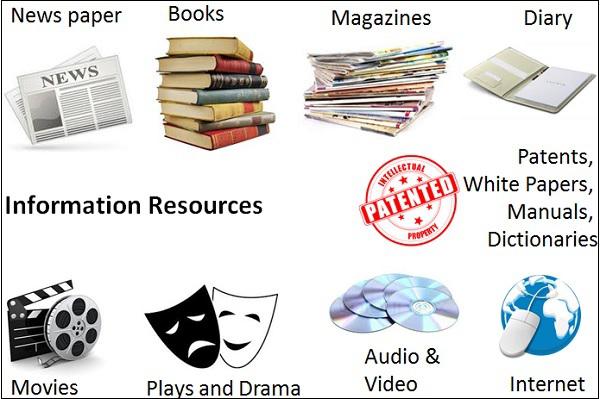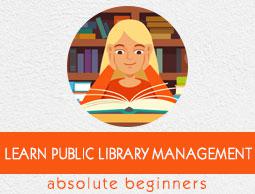Public Library Mngmt - Information Sources
Today everyone is engaged in handling, consuming, and exchanging a lot of information. Though information is an indispensable part of our lives, we are seldom aware of what the term information exactly stands for. Information is the facts or news we gain or provide. It is the mean of knowledge that is employed to realize an intended function.
Public libraries are a kind of information center, where they store, process, manage, and serve information on the demand of users.
What are Information Sources?
An Information Source is nothing but a place, person, or a thing from where the information originates. The quality of the information depends directly upon the type of information resource we choose.
There are three types of information sources −
Primary Information Sources
Primary sources of information are original and in their raw form. It is the first-hand account of information and hence the most reliable source. It is most accurate and covers all the details.
For example, Journals, Conference Volumes, Patents, Research Reports, Gray Literature, Thesis, Diaries, Letters, Novels, Poems, Plays, Speeches, Artefacts, Archeologica Evidences, Eyewitnesses, Photographs, Recorded interviews, Music, Art pieces, Legislation and Policy Documents, and Parliamentary Papers.
Secondary Information Sources
This is the interpreted or evaluated version of the primary information source hence they are deviated from the original version. It is mostly accurate but with loss of some details. It is more reliable than the tertiary information source.
For example, newspapers, magazines, bibliographies, encyclopedia, directory, geographical source, text book, critics, index and abstract.

Tertiary Information Sources
It is the information source based on primary and secondary information. It is less reliable in terms of facts and details. For example, Film Documentaries, Manuals, Chronologies, Almanacs, and Guide books.
Information Formats
The formats of information literally depict the way in which the information is stored and retrieved. Here are the three formats in which the information can be distributed −
Print Format − It is the information published on the paper either hand written or printed. For example, Books, Serials, Magazines, Official publications.
Electronic Format − It is the format where information is recorded, stored, and retrieved by means of computer technology. For example, CDs/DVDs, Websites, DOXs and PDFs, and databases with search facility.
Audio-Visual (AV) Format − It is the information format that involves sound, images, and motion pictures. For example, Television and PowerPoint slides.
Information Users and their Needs
As an information providing center, public libraries need to be more concerned about delivering the right information to the right users efficiently. The librarian must precisely deliver the knowledge element that matches with the user’s request for information.
Various information seekers such as Professors, Researchers, Entrepreneurs, Technologists, Scientists, Managers, Students, and general public around the world try to find the information of their interest in the library.
Steps in Information Seeking
The following is the course of actions a user undertakes to seek the information −
Identify objective or function that needs to be done. (To know about AI)
Define the kind of information need. (Books, Internet)
Access information center and resource. (Go to library, find resources on AI)
Acquire information. (Take the books, browse the Internet for information)
Use information. (Read, know, and take notes)
Experience satisfaction/dissatisfaction. (Realize the objective)
The need of information varies depending upon user’s profession, responsibilities, duties, prior knowledge, and interests. The manner in which the information is sought affects the success of the intended objective.



